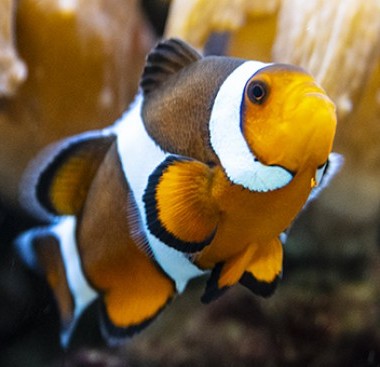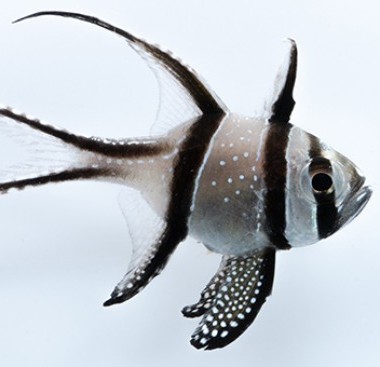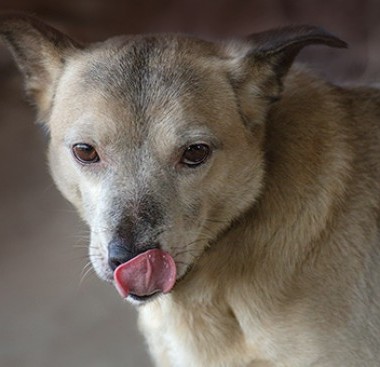Greenpeace, Other Groups Praise New US Congressional Effort
Washington bill gives hope to US tuna industry
By: Staff Date: 03/19/1997 Category: | Animal Legislation | Wildlife Journal |
Introduction
While nations grapple with decimation of fishing stocks in the North Atlantic Ocean, tuna fishermen in Southern California, Mexico, and Central and South America may finally begin to reap the fruits of their conservation labors with approval of a new multinational agreement and introduction of a new bill in Congress.
A pact between fishing nations will lift US embargoes against tuna caught by casting nets around dolphin herds was approved in Mexico and ratified in Panama by 12 fishing nations, including the US. The agreement is supported by several major environmental organizations, the first time these groups have sided with fishermen on the controversial tuna-dolphin issue. The pact will move to end embargoes of tuna from countries operating in the huge Eastern Tropical Pacific yellowfin tuna fishery.
The agreement continues the work of the Inter-American Tropical Tuna Commission to teach fishermen the skills necessary to release dolphins encircled by their nets and to research the tuna-dolphin connection in hopes of devising methods of catching mature yellowfin tuna that do not involve encircling dolphins.
"At last, the major environmental groups recognize good conservation and wise use of resources when they see it," said Teresa Platt, co-director of The Fisherman's Coalition of San Diego, California. "The IATTC program has been lauded as an environmental success story by the State Department and is a model for international fisheries management."
Five environmental groups, - Greenpeace, World Wildlife Fund, National Wildlife Federation, Environmental Defense Fund, and the Center for Marine Conservation - ended their long-standing opposition to tuna fishing near dolphin herds and endorsed the initiative proposed by Latin American governments and the IATTC.
"We're quite encouraged that the governments have demonstrated their willingness to build the kind of effective, legally binding dolphin protection program that we have sought for years," said Gerry Leape of Greenpeace International in a joint statement issued by the five groups.
Nina Young, marine mammalogist with the Center for Marine Conservation, agreed. "The agreement would protect those species that require it most, setting mortality limits and benchmarks for all dolphin species in the ETP (Eastern Tropical Pacific)."
David A. Colson, deputy assistant secretary of Oceans and International Environmental and Scientific Affairs in the US Department of State, seems to share these views. Early this year, Colson told a Congressional subcommittee: "The most difficult issue in this area in recent years has been the tuna/dolphin controversy. . . . I would like the subcommittee to be aware that the dolphin protection program of the Inter-American Tropical Tuna Commission has been phenomenally successful, to the point where accidental dolphin kills have been reduced to extremely low levels. The tuna embargoes required by the Marine Mammal Protection Act are harming our relations with the embargoed countries. We would be interested in exploring with Congress in the year ahead how to resolved the embargo problem while not lessening the protection of the dolphins."
HR 2179
In an attempt to aide the efforts of responsible fishermen, Congressman Randy Cunningham (R-San Diego) and three colleagues introduced HR 2179 to modify current embargoes against yellowfin caught by casting nets around dolphin that associate with these fish, continue to support the International Dolphin Conservation Program, and redefine "dolphin safe" tuna as a "gold star" for perfect performance by fishermen for releasing dolphins.
Congress approved the Dolphin Protection Consumer Information Act in 1991 to define "dolphin safe" labels for canned tuna. The labels could not be used if the fish were caught by casting purse seine nets around dolphins - even if no dolphins were killed or injured. Since US tuna canneries were using the dolphin safe labels, US fishermen were forced to either find other markets for their fish or to find fish that were not associating with dolphins. Since mature yellowfin almost always swim with dolphins, they went in search of immature fish and set in motion a series of other environmental problems. (see related story)
The label definition punished only fishermen in the Eastern Tropical Pacific where tuna were gathered by purse seine nets. Tuna caught with other gear were considered "dolphin safe" even if marine mammals died, but yellowfin taken with purse seine nets set around dolphins were not "dolphin safe" even if all encircled dolphins were set free. HR 2179 addresses this inequity.
International Dolphin Conservation Program
IATTC began its education program in 1986 by working with crews of tuna boats to increase their skills in releasing dolphins from the nets. This program had reduced dolphin mortality from 130,000 animals to 4000 in the past few years.
In 1992, this effort became the International Dolphin Conservation Program and was ratified by 10 nations involved in the Eastern Tropical Pacific fishery. Administered by the IATTC, the program has two goals: reduce dolphin deaths to "levels approaching zero" by setting annual limits and seek ecologically sound methods for capturing large yellowfin tuna without relying on dolphin association. These goals coincide with provisions of the original MMPA passed in 1972.
Annual limits on dolphin deaths set by the IDCP are 1993, 19,500; 1994, 15,500; 1995, 12,000; 1996, 9000; 1997, 7500; 1998, 6500; 1999, less than 5000. The limits are divided among qualified boats fishing on dolphins; once a boat reaches its limit, it must cease fishing around dolphins swimming in association with tuna for the remainder of the year. Compliance is monitored by official observers.
The IDCP was unique in several ways: it allocated limits to individual boats of different countries through an international agreement; provided for an international review panel of government, industry, and environmental representatives to monitor compliance; and established a scientific advisory board to assist in research and development of techniques for catching large yellowfin without encircling dolphins.
The individual limits allowed crews to perfect their own techniques and not worry that their efforts can be negated by a crew that is not so successful. The 1999 goal was achieved in 1993, the year following signing of the agreement; 3605 dolphins died in fishermen's nets in the ETP that year.
Dolphin deaths due to contact with purse-seine fishermen in the ETP comprise about .04 percent of the 10 million population in the eight million square mile fishery and a fraction of the deaths caused in other fisheries, according to Teresa Platt of The Fisherman's Coalition. In contrast, worldwide estimates of cetacean deaths - dolphins, porpoises, and whales - is estimated between 300,000 and one million. The ETP fishery is the first to address and solve the problem of marine mammal deaths, yet it is the only fishery targeted by embargoes and unrealistic expectations.
US policy
Driven by environmentalists and domestic political considerations instead of science, US tuna-dolphin policy has been contradictory at best. While government representatives worked on the 1992 IDCP, Congress considered, rejected, and then approved a moratorium idea on fishing for tuna in association with dolphins. Known as the International Dolphin Conservation Act of 1992, the law required at least one other tuna fishing nation to accept the moratorium before it would be implemented. None did.
The International Dolphin Conservation Act also banned encirclement of two species of dolphins and forbade US citizens to deal in tuna or tuna products if the fish is caught in association with dolphins. Thus Americans could catch tuna by encircling dolphins, but they could not sell their catch in the US.
Further complications to US policy arose from 1988 MMPA amendments that set standards for foreign vessels fishing for yellowfin in association with dolphins. These amendments led to embargoes of tuna from nations that do not meet US criteria for dolphin mortality. According to James Joseph in his IATTC report The tuna-dolphin controversy in the eastern Pacific Ocean: biological, economic, and political impacts: "Any nation failing to meet these requirements is subjected to a primary embargo, which prohibits the importation of that nation's yellowfin tuna and yellowfin tuna products to the United States. Within 90 days of the imposition of this ban, a further secondary embargo is imposed on yellowfin and yellowfin products from any intermediary nation trading with the nation under embargo and the United States if the intermediary nation does not ban tuna imports from the embargoed nation within 60 days."
Furthermore, Joseph continued, those embargoed nations that do not comply with the US MMPA within six months may face embargo of all their fish and fish products. The rules for implementation of the amendments were published in March 1990. When canners went "dolphin safe" a few months later, most of the US fleet fled the ETP. The result was the US standard disappeared and everyone was embargoed.
In 1991, at the insistence of the radical group Earth Island Institute, the US tried to enforce the embargo conditions against Mexico, Venezuela, and Vanuatu, and the Mexican government brought the issue to an arbitration panel of the General Agreement on Tariffs and Trade, the international trade convention. The panel found that the MMPA violates GATT articles by attempting to restrict trade in resources that lie outside US jurisdiction and that such restriction was not a last resort for the protection of dolphins. The GATT panel did uphold the US regulation that limited "dolphin safe" tuna to those fish caught without casting nets around dolphin, but only because the label definition was used as a marketing strategy by a private company. If a government codified the designation of "dolphin safe," the GATT decision said, it would become a trade barrier in violation of GATT principles. The US Congress passed "dolphin safe" legislation after the GATT decision was rendered and has been in violation of the world trade agreement.
The European Community also filed a complaint against the US tuna embargoes with GATT and won its case.
In both cases, the GATT arbitration panel said that such issues are better solved with a multilateral approach. The Panama agreement and HR 2179 are a result of that effort.
Organizations in favor of the IATTC dolphin conservation program and repeal of punitive US embargoes on tuna caught by encircling dolphins
The five conservation organizations that now favor the conservation program of the Inter-American Tropical Tuna Commission as the best bet for reducing dolphin mortality to zero in the Eastern Tropical Pacific fishery join the following organizations to urge Congress to approve an education, multi-lateral approach to the reduction of bycatch incidental to fishing for tuna:
- Alliance for America
- Defenders of Property Rights
- Sportfishing Association of California
- Adirondack Blue Line Confederation
- American land Rights Association
- California Taxpayer's Network
- Communities for a Great Northwest
- East Coast Tuna Federation
- East Coast Tuna Association
- Grassroots ESA Coalition
- National Animal Interest Alliance
- Putting People First
You can help by contacting your Congressman and asking him to vote in favor of HR 2179 as a reasonable solution to a complex problem.
About The Author
All Authors Of This Article: | Norma Bennett Woolf |












